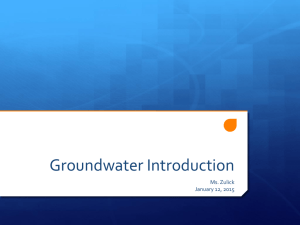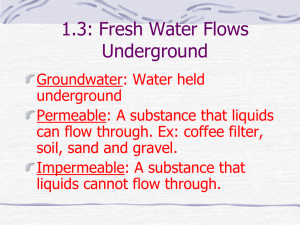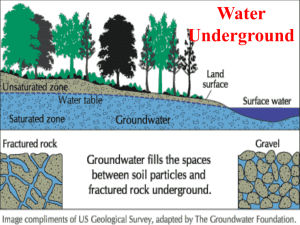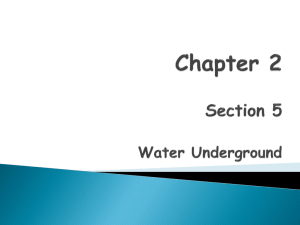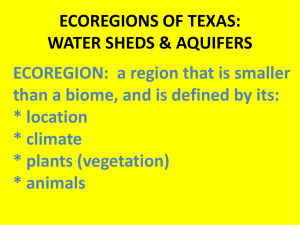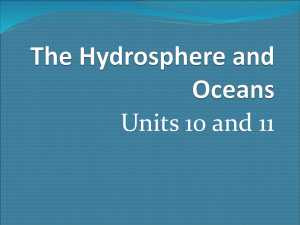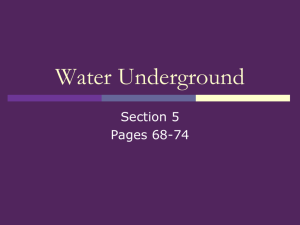Fresh Water - Germantown School District
advertisement
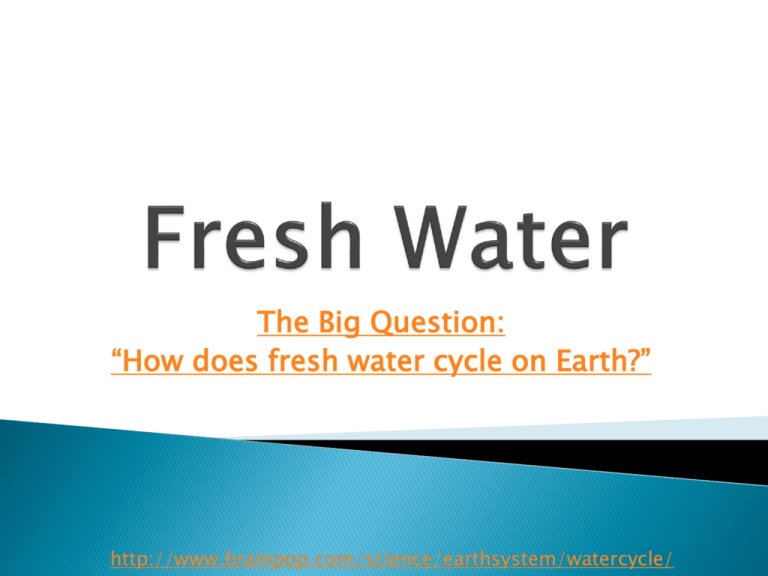
The Big Question: “How does fresh water cycle on Earth?” http://www.brainpop.com/science/earthsystem/watercycle/ Why is water important? Where is water found? What is the water cycle? Complete Figure 3 on page 8 throughout the PowerPoint ◦ Allows organisms to: Break down food Grow Reproduce Get and use materials they need from their environments ◦ Provides habitats (place where organism lives): Water-dwelling organisms (i.e. sharks) Salt water (97%) Fresh water (3%) ◦ 2/3 frozen in huge masses of ice (Poles) ◦ 1/3 underground ◦ Tiny amount in lakes and rivers ◦ Tiny amount in the atmosphere (water vapor) Pop Quiz: Do water or land habitats contain more types of organisms? Water Habitats! Water Cycle: A continuous process by which water moves from Earth’s surface to the atmosphere and back, driven by energy from the sun and gravity. ◦ Water moves between land, living things, bodies of water on Earth’s surface, and the atmosphere. Evaporation: Process by which molecules at the surface of a liquid absorb enough energy to change to a gaseous state. Transpiration: Water is given off through the leaves as water vapor. Condensation: Water vapor cools and condenses into a liquid (Droplets of liquid water clump around solid particles in the air forming clouds) Precipitation: Water droplets large enough to fall back to Earth (as rain, snow, sleet, or hail) Runoff: Small amount of remaining precipitation that runs off the surface into streams and lakes Condensation Transpiration Evaporation Runoff Precipitation Take out the sheet you picked up when you came in and prepare to get wet! http://www.brainpop.com/science/earthsystem/watercycle/ How does water move underground? How do people use groundwater? http://www.brainpop.com/science/earthsystem/groundwater/ Water underground trickles down between particles of soil and through cracks and spaces in layers of rock. ◦ Pore: spaces between particles ◦ Permeable: Materials (sand and gravel) that have large connected pores (water can pass through easily) ◦ Impermeable: Materials (clay and granite) that have very small pores (water can’t pass through easily) PERMEABLE! IMPERMEABLE! Layer of air and some water (not completely filled with water) Layer where pores are filled with water Top of the saturated zone Spring: Where groundwater meets the Earth’s surface. Aquifers: Any underground layer of permeable rock or sediment that holds water and allows it to flow (aquifer sizes vary) ◦ Not an unlimited source of water…drops if more water is used than replenished Ogallala Aquifer Rate depends on: ◦ Slope of water table ◦ Permeability of the rocks Some move a few centimeters per day Groundwater may travel hundreds of kilometers and stay in an aquifer for thousands of years before coming to the surface again Used to obtain groundwater from an aquifer (drilled to an area below the water table) Mechanical pumps bring the water up the well. Use too much water = well dry up ◦ Need to wait for rainfall to refill the aquifer Artesian well: Water rises on its own due to pressure in the aquifer Groundwater trapped between two layers of impermeable rock. Aquifer Diagram ◦ Fill in as many of the questions as you can without using your book or notes.

